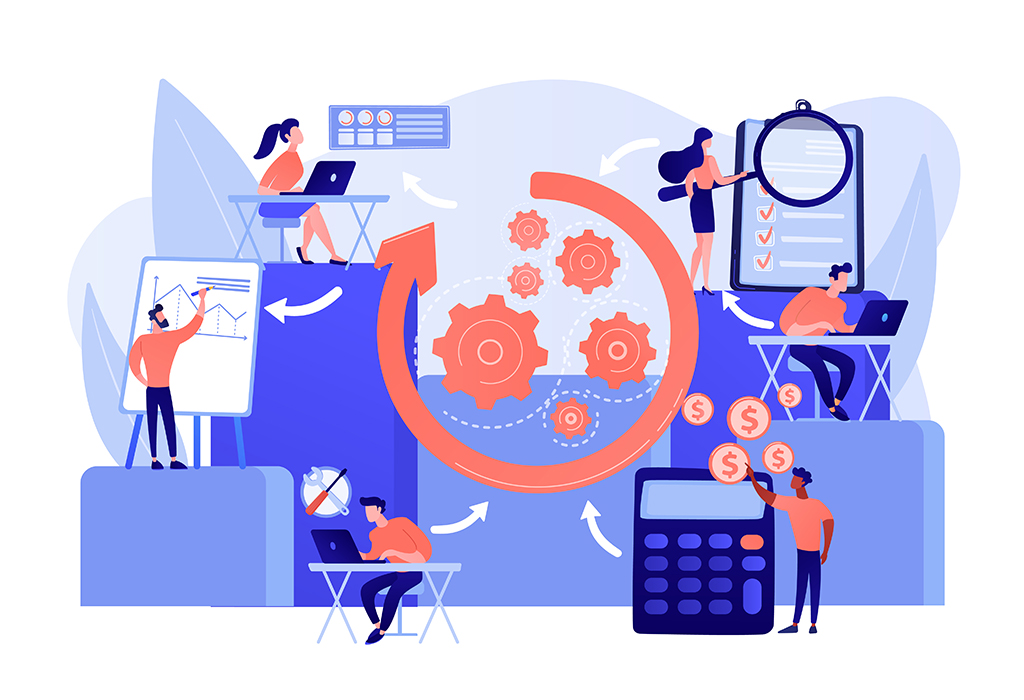Pricing has always been a complex matter. And in recent years, the complexity of this function has only increased due to the economic impact of the global pandemic, the swift growth of e-commerce, and now, inflation concerns. To simplify and optimize pricing moving forward, B2B enterprises need a solution that would allow them to deliver the right price, at the right time, in the right channel for all buyer interactions.
Author Radiana Pit | Copperberg

Photo: Freepik
According to a recent eBook by PROS titled Drive Revenue Growth and Boost Margins with Smarter Pricing, B2B firms can reach new heights in the new digital selling era by bridging the technology gap in the pricing process and adopting an omnichannel approach to pricing.
Today, pricing teams can make the difference between major revenue lift or leakage. However, managing pricing in a volatile market where customers constantly evolve their buying behaviors is no easy feat, especially considering the top pain points within pricing processes across the industry:
- Slow responses to market shifts or competitive actions;
- Lagging and unrealistic pricing;
- Messy workflows and approvals;
- Lack of pricing harmony across channels;
- Lack of governance and visibility.
In a digital-first world where speed has become a gold standard, pricing precision and agility have become more important than ever before.
Traditional tools are standing in the way of pricing excellence
Legacy pricing methods and solutions cannot keep up with the demands of the new digital selling era. Thus, as needs and expectations evolve, so should the pricing strategies of B2B organizations.
One of the main problems that make it challenging to achieve pricing precision and agility using legacy solutions is that the factors affecting pricing today are growing in complexity and numbers.
As always, pricing continues to be influenced by demand, supply, costs, and the customer’s willingness to pay. But in addition to these well-known factors, new ones are beginning to emerge pertaining to innovative business models, uncovered buyer data, current market conditions, and more. Many B2B firms are ill-prepared to execute and analyze all those factors with granularity, thus putting their sales and margins at risk.
Furthermore, buying behavior has evolved in the past couple of years and it continues to do so now and in the future, adding to the pressure already put on pricing professionals. Before, the decision-making process in the B2B landscape was more time-consuming not only because it involved multiple stakeholders but also because service or product research was done rather manually.
Today, e-commerce has expedited the process with rich product or service information available online, making B2B purchasing decisions faster than they have ever been. Additionally, while making a purchase, B2B customers have come to expect the same transparent, frictionless, fast, and personalized interactions with providers that they experience when making a B2C purchase.
Considering the new pricing requirements and evolving customer expectations, traditional pricing tools can no longer be deemed reliable. For example, using legacy and familiar spreadsheets to create customized pricing when there are potentially thousands of SKUs and a growing number of influential market factors to manage is hugely complex, time-consuming, and prone to error.
Yet, according to PROS research, 84% of enterprise pricing professionals continue to rely on spreadsheets for otherwise highly complex pricing operations, which leaves them unable to react to market changes in a time-efficient manner that satisfies customer needs.
Those who have understood the limitations of using spreadsheets as part of the pricing process have begun to build their tools and automation solutions in-house. And although efficient to a certain extent, such solutions are likewise limited when it comes to data handling and scaling. Many in-house measures implemented by B2B organizations can result in missed opportunities, errors, and of course, revenue leakage.
The advent of B2B price optimization and management
Considering the limited capabilities of traditional pricing solutions and in-house tools, how can B2B firms ensure that they deliver accurate prices to their customers when they demand them?
By using price optimization and management (PO&M) software, pricing organizations can upgrade their processes to boost their revenue and margins, and manage their profit goals with a higher degree of success, governance, and insight. The software solution replaces outdated spreadsheets and manual price optimization, thus bridging the tech gap that makes it impossible to meet new pricing requirements and customer expectations.
PO&M gives pricing teams the ability to rate new products, customers, touchpoints, and regions at a highly granular level with increased speed and consistency, while also enabling them to save valuable time that can be better used enhancing collaboration with sales teams.
Furthermore, human error is minimized, if not completely eliminated, as PO&M software leverages AI to produce optimal prices based on all factors that influence it, including the customer’s willingness to pay, local market conditions, competitor pricing, and more.
Although pricing is managed by the pricing team, every relevant department across the organization, from sales and marketing to finance and operations, can access PO&M as a centralized source of pricing truth. This not only improves cross-departmental collaboration but also allows for more pricing transparency among other stakeholders. For sales teams especially, access to optimal prices and pricing guardrails is critical in expediting sales and facilitating negotiations.
There is much that can be achieved by leveraging a PO&M software solution. According to PROS, sales teams using PO&M have reported increases up to 5% in revenue, 10% in margins, and a whopping 20% in customer lifetime value.
B2B companies can achieve such tangible results by synchronizing their pricing, selling, and e-commerce strategies, and providing buyers with consistently personalized prices across the sales channels they prefer. PO&M software makes it possible to perform all of the above and more without the overwhelming and time-consuming complexity of standard pricing.
Creating value that counts
Bridging the tech gap to achieve optimal pricing has never been more important. Outdated solutions simply cannot keep up with the increasingly complex market requirements and customer demands in the new selling era.
Copperberg’s Manufacturing Pricing Excellence conference on the 14th of September 2022 is dedicated to helping pricing professionals discover more efficient ways to optimize pricing, deal with market volatility, enhance collaboration with sales, and communicate pricing internally and externally.
PROS will be there to show B2B pricing organizations how to cope with inflation and increase prices without decreasing margins using AI-based solutions such as PO&M software.






























